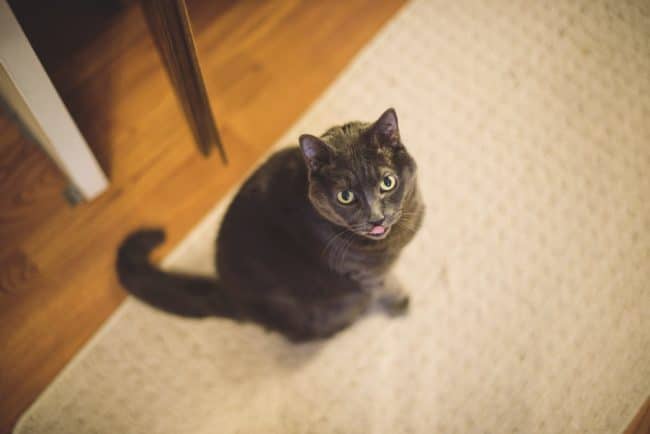So, you may end up wondering ‘Cat cats eat caramel?’
You love your cat and consider it a member of your family. Giving your cat a royal treatment includes among others providing the best cat food for your furry friend. Pet owners often express their affection by offering treats, but are they safe for cats? For instance, can cats eat caramel?
We know there is always the temptation of offering cats human food from your plate. Not to mention that felines help themselves if they have the opportunity and steal your food.
Is it possible for your cat to end up eating caramel?
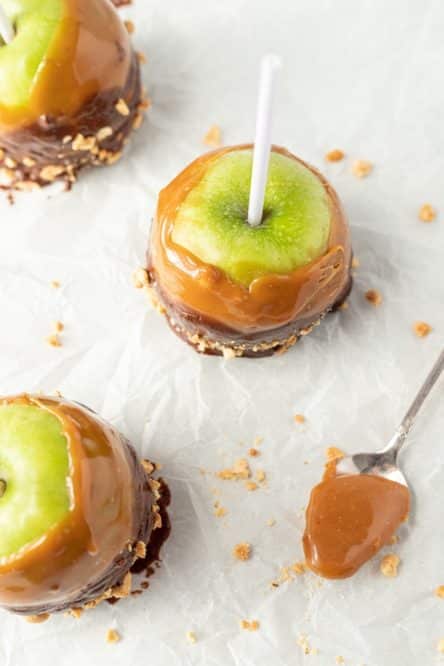
Most responsible pet owners would never consider offering caramel to cats in the first place but…
- You may be tempted to offer it as a treat
Your cat has tasted a sweet treat before and nothing bad happened. Now you are considering giving it some again.
You may have some cake containing caramel or you may be having a sweet snack. Your cat passes by and looks interested in your nibbling. In such situations you may end up offering some of the caramel to your cat.
- You probably feed your cat table scrapes
Some pet owners feed their cats with leftovers from their table. It usually happens when the cat is healthy and does not require cat food for sensitive stomach. Some pet owners do it because it enables them to save money on cat food.
However, these table scrapes can contain many foods and ingredients that are harmful to cats. Some ingredients can be toxic without you even knowing. [1]
- Your cat begs for human food
The image of a cat begging and scratching furniture is very familiar to any pet owner. Cats have excellent hearing and the sound of opening a food package will make them come running. If you offer unsuitable treats once, they will come again and ask for more.
Beware of too much begging and whining for food, as this can indicate a medical issue. Cats should be less motivated by food than dogs.
- The cat steals like many other cats do
Leaving food unattended on the table or kitchen counter is a bad idea when you have a cat. Felines will easily jump onto the table and steal a piece of food. Once they discover something tasty that they can’t find in their food dish, they will always look for more. [2]
The habit of stealing is very hard to break in cats, so make sure you eliminate temptations.
What is caramel and can cats eat caramel at all?
Caramel is sugar heated to 170 degrees Celsius. The process causes molecules to break down and form new compounds with a rich flavor.
Any kind of sugar can be used to obtain caramel. Caramel varieties include toffee and butterscotch. Some recipes include additions such as butter. Different heating levels will make the caramel more flexible or brittle.
Caramel can be eaten as it is or included in other foods. You will most likely find caramel in candies, desserts, and beverages.
What does caramel contain?
Can cats eat caramel? In order to answer this question we need to find out what this dessert contains. Caramel contains very much sugar and should be consumed in small amounts by humans too.
Recipes vary, so caramel may also contain:
- A pinch of salt
- Water
- Butter
- Cream
You don’t need to be an expert in nutrition to know that water is the only ingredient allowed to cats.
Beware of xylitol as a possible caramel ingredient
Most commercial caramel sweets contain multiple other ingredients aside from sugar. One of those ingredients is xylitol, which can be fatal to cats.
Xylitol is an artificial sweetener used as a sugar substitute in foods. Examples of foods containing xylitol are sugar-free gum, chewable vitamins, and oral care products. It can also be found in granulated form for sweetening desserts and beverages.
While xylitol is safe for humans, cats and dogs can be severely affected by this substance. Xylitol causes insulin to be released into circulation. What follows is a rapid decrease of blood glucose levels. Hypoglycemia further causes liver toxicity and even liver failure.
Humans and pets have different metabolisms. This is why we can consume xylitol but we shouldn’t give it to cats or dogs. The dose that can cause liver toxicity in cats is 0.5 g xylitol/kg body weight.
Symptoms caused by xylitol ingestion are:
- Vomiting, immediately after ingestion;
- Hypoglycemia in 30 to 60 minutes after ingestion;
- Lethargy and weakness;
- Ataxia or trouble walking;
- Collapse and seizures;
- Long blood clotting times, skin and intestinal hemorrhaging – these suggest a poor prognosis.
Consult your veterinarian immediately if your cat has ingested xylitol. You need to act very fast if you want to avoid fulminant liver failure and death.
What issue can caramel cause in cats?
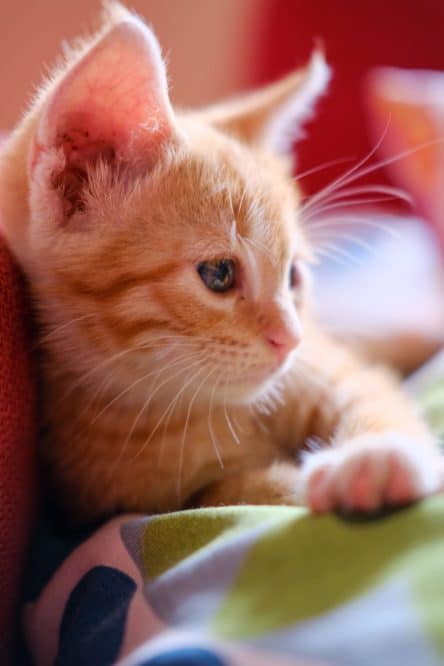
A small amount of caramel may cause no harm at all to your cat. However, larger quantities or regular consumption can be dangerous.
The first concern related to caramel is its high sugar content. This can cause diabetes, one of its symptoms being cat loss hair due to diabetes. Simply looking for cat food for shedding will not solve the problem. Once diabetes sets in, all you can do is manage the condition for the rest of the cat’s life.
Even if your cat does not develop diabetes, weight gain is a certain effect of sugar consumption. You should avoid feeding your cat sugar and larger amounts of fruit. Natural sugar can cause health problems to cats, as they are carnivores. They should be fed animal protein and fat, not carbohydrates.
Sugar is also known for its negative effect on oral health. Unless you brush your cat’s teeth after sugary treats, tooth decay can develop.
Some caramel recipes contain large amounts of butter. Regular consumption of fat in large quantities can give your cat pancreatitis.
Caramel represents an issue also because it can make your cat choke or have an intestinal blockage. Candy containing sticky caramel is difficult to swallow and cats are not used to this type of food. It is possible for the caramel to lodge in the cat’s throat and make it choke.
Even if the cat manages to swallow the caramel, there are further risks. Caramel may not be digested by the cat’s stomach and reach intestines as it is. This can cause a blockage, which is a serious medical emergency and requires immediate veterinary attention. The risk of intestinal blockage also comes from candy wrapper that the cat can ingest with the caramel.
Signs your cat may be having intestinal blockage include:
- Vomiting;
- Lethargy;
- Bloating;
- Being unable to pass stool.
The least that can happen if your cat eats caramel is having a digestive upset. This will not endanger the cat’s life, but is unpleasant both for the pet and its owner.
What about caramel popcorn?
Caramel popcorn may look less dangerous than plain caramel. However, feeding popcorn caramel to your cat is still a bad idea.
Popcorn is not necessarily harmful, but it has little nutritional value to a cat.
The fact that it is covered in sugar is a problem, as sugar is not a suitable food for felines.
There are better treats to offer a cat than caramel popcorn. It is understandable for cats to appreciate flavor variety every now and then. This is why there are many commercially-available healthy treats for cats. You just need to try and test until you find their favorite.
What other foods are bad for cats?
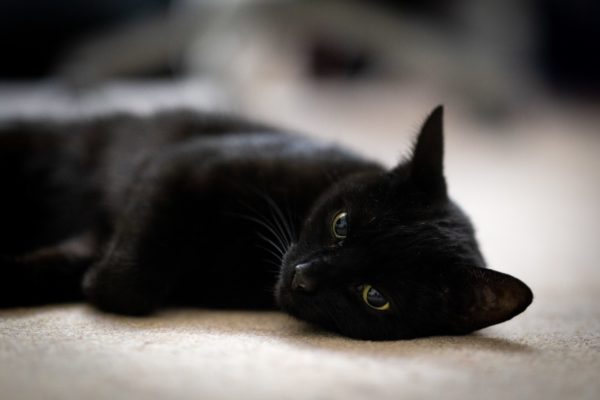
Some very common and apparently innocent ingredients can be toxic for your cat. This is why offering table scrapes is not a good idea. Here is a short list of the most harmful foods that your cat should never eat:
- Onions and garlic
Onion and garlic in any form contain a toxin that can cause anemia in cats.
- Raw eggs
They pose a risk of Salmonella infestation and also contain an enzyme called avidin. Avidin decreases the absorption of vitamin B.
- Raw fish
It can cause a stomach upset and poisoning due to bacteria contained by raw meat.
- Alcohol
Even a small amount of alcohol can cause intoxication in cats and eventually kill the animal.
- Chocolate
Chocolate contains theobromine, a substance that is toxic to cats. Symptoms include tremors, seizures, irregular heart rhythm, and death.
- Milk and dairy products
Cats develop lactose intolerance after being weaned. The difficulty of processing dairy products will result in stomach upset and diarrhea.
- Green tomatoes and potatoes
They contain solanine, which is toxic and causes gastrointestinal problems. Ripe tomatoes are allowed and can even be found in very small quantity in some pet foods.
- Caffeine
Don’t give your cat caffeine or tea, as a large amount of caffeine can be fatal in cats.
Advice regarding dangerous foods for cats
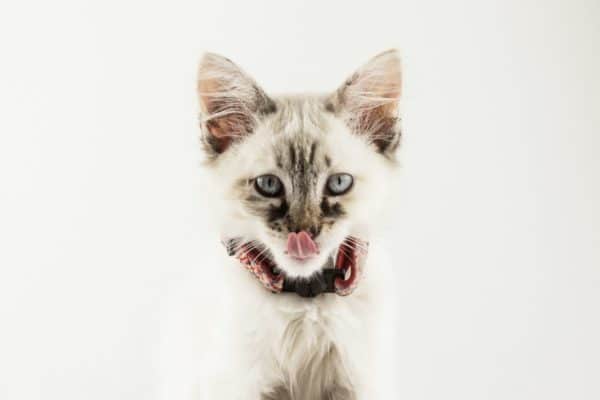
Cats are like family members, but this doesn’t mean they should eat human food. You may be wondering if “can cat eat whipped cream?” or another human treat.
Since cats are not omnivores (like some dogs), you should be very careful about what they eat. Keep in mind the following pieces of advice to avoid unpleasant situations:
- Store dangerous foods out of your cat’s reach;
- Install cat-proof locks on cabinets if the kitty likes to explore;
- Don’t leave food unattended or cover it;
- Introduce new foods only after consulting the vet, especially if your cat needs cat food for sensitive stomach;
- Be careful about treats and table scraps, as they can contain harmful ingredients;
- Offer a healthy and diverse diet to your cat to prevent stealing and begging;
- Pay extra attention during the holidays, when chances of eating unsuitable human food are higher.
Read Next: Can Cats Eat Vienna Sausage
Bottom-line
Can cats eat caramel, after all?
The answer is no. You may risk giving a small quantity, but there is no good reason to do it. It provides absolutely no benefit to cats and chances of affecting your kitty’s health are quite high
